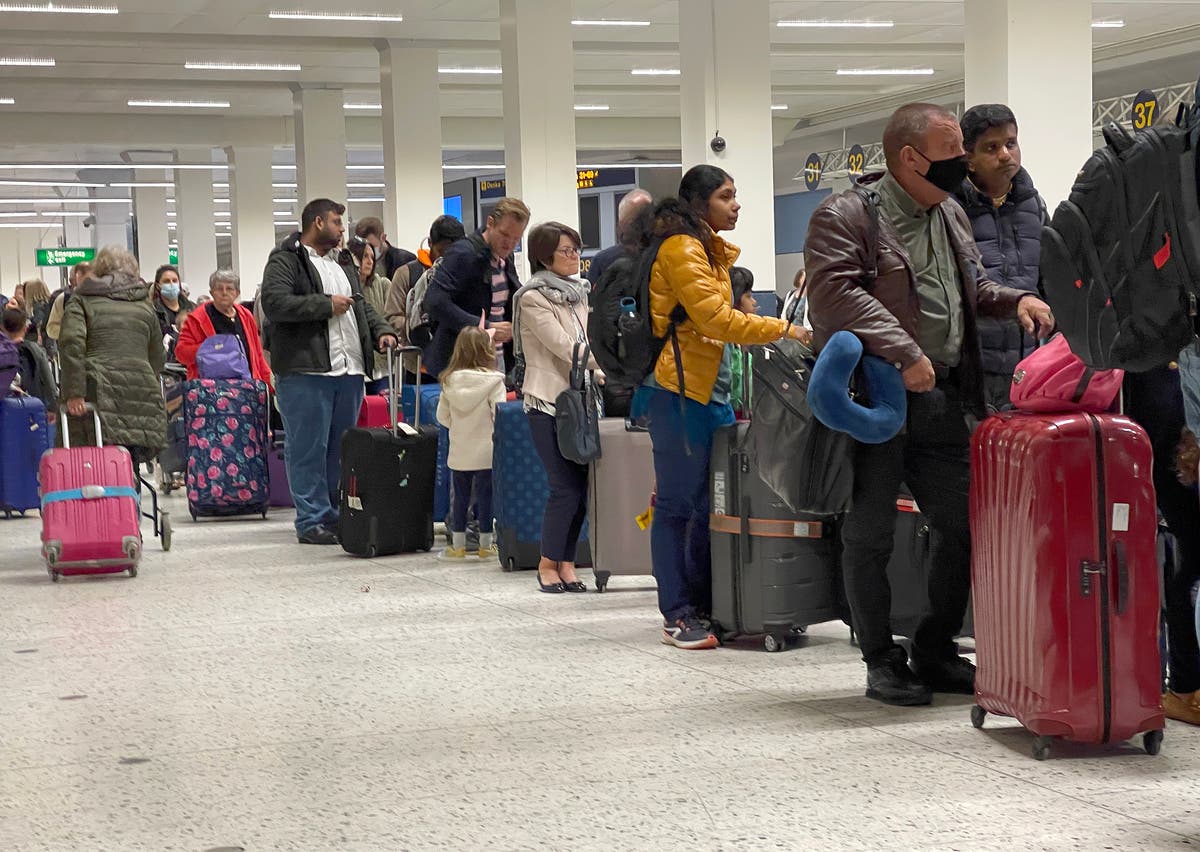Outdated London Euston station needs major overhaul amid overcrowding fears, says Network Rail
Transport secretary Louise Haigh agrees five-point plan to tackle overcrowding and confusion at terminus with ‘zombie’ HS2 building site

Your support helps us to tell the story
Our mission is to deliver unbiased, fact-based reporting that holds power to account and exposes the truth.
Whether $5 or $50, every contribution counts.
Support us to deliver journalism without an agenda.

London Euston is an “outdated station” with episodes of “very uncomfortable and unpleasant conditions for passengers” and is “in major need of overhaul”.
So says its owner, Network Rail. Along with its parent organisation, the Department for Transport (DfT), Network Rail has announced “a five-point plan that aims to improve the functioning of Euston station”.
Earlier this month, London TravelWatch – the transport watchdog for the capital – warned “high levels of overcrowding”at Euston were “putting passengers in danger”.
London Euston is the seventh-busiest rail terminus in the country. It is the hub for the West Coast main line, on which Avanti West Coast connects the capital with the West Midlands, northwest England, North Wales and southern Scotland. In addition, London Northwestern and London Overground run commuter services to the northwest suburbs and northern Home Counties.
On the average day London Euston handles 86,000 passengers, compared with around 30,000 envisaged when the rebuilt station was opened by the Queen in 1968.
Concern has been growing about overcrowding and confusion at the station, which is saddled with a “zombie” building site on its western flank – the now-suspended HS2 project.
The project managers said: “Work to construct the HS2 station at Euston was paused on 9 March 2023 due to inflationary pressure and the need to find a more affordable design.”
Constrained access caused by the stalled project is compounding the dismal passenger experience at the terminus.
The transport secretary, Louise Haigh, said: “For too long, Euston station simply hasn’t been good enough for passengers.
“That’s why I’ve tasked Network Rail with coming up with a clear plan to immediately improve conditions for passengers. This includes a shutdown of the advertising boards from today to review their use.
“We know Euston needs a permanent solution and are working hard to agree this – but these immediate steps will help to alleviate some of the issues the station has been facing.”
Gary Walsh, Network Rail’s route director for West Coast South said: “Passengers haven’t received the experience they deserve at Euston recently and we need to do better.
“Our five-point plan will help improve things for passengers in the short term by creating more space, providing better passenger information, and working as an industry to improve the reliability of train services on the West Coast Main Line.”
Senior managers at Network Rail will meet Ms Haigh next week “to answer questions on plans for the station and set out a route towards longer-term improvements to the passenger experience”.
The five-point plan comprises:
1. Reviewing passenger information provision and circulation, including a shutdown and review of the use of overhead advertising boards.
The large, clear departure board that was a hallmark of the station for decades was removed and replaced by a vast advertising screen, with train information displaced to smaller information screens. The effect was to confuse and disorientate passengers, particularly infrequent users.
The advertising was, however, extremely lucrative, and the loss of revenue will ultimately be met by the taxpayer.
2. A review on how passengers are invited to, and board services, especially during disruption.
The constrained concourse fills quickly during disruption, with surges of passengers when a train’s platform is finally announced. Presumably the aim will be to provide earlier warning so that the flow of passengers is gentler.
3. Creating more concourse space and alleviating pinch-points, which will include more, and upgraded, toilet provision.
It is difficult to see where more space could be created without removing some of the catering and retail concessions, or redesigning access to the platforms.
4. Unifying station operation during disruption to ensure a holistic approach is taken for the benefit of all passengers.
Passengers might have fondly imagined that Network Rail and the train operators were doing exactly that previously.
5. Driving up the reliability of both the infrastructure and train services to reduce disruptive events being experienced at the station.
The only effective way to do that would be to complete HS2 to and from Euston, with vast new station areas open. But that is at least a decade away.

 Tfoso
Tfoso 































